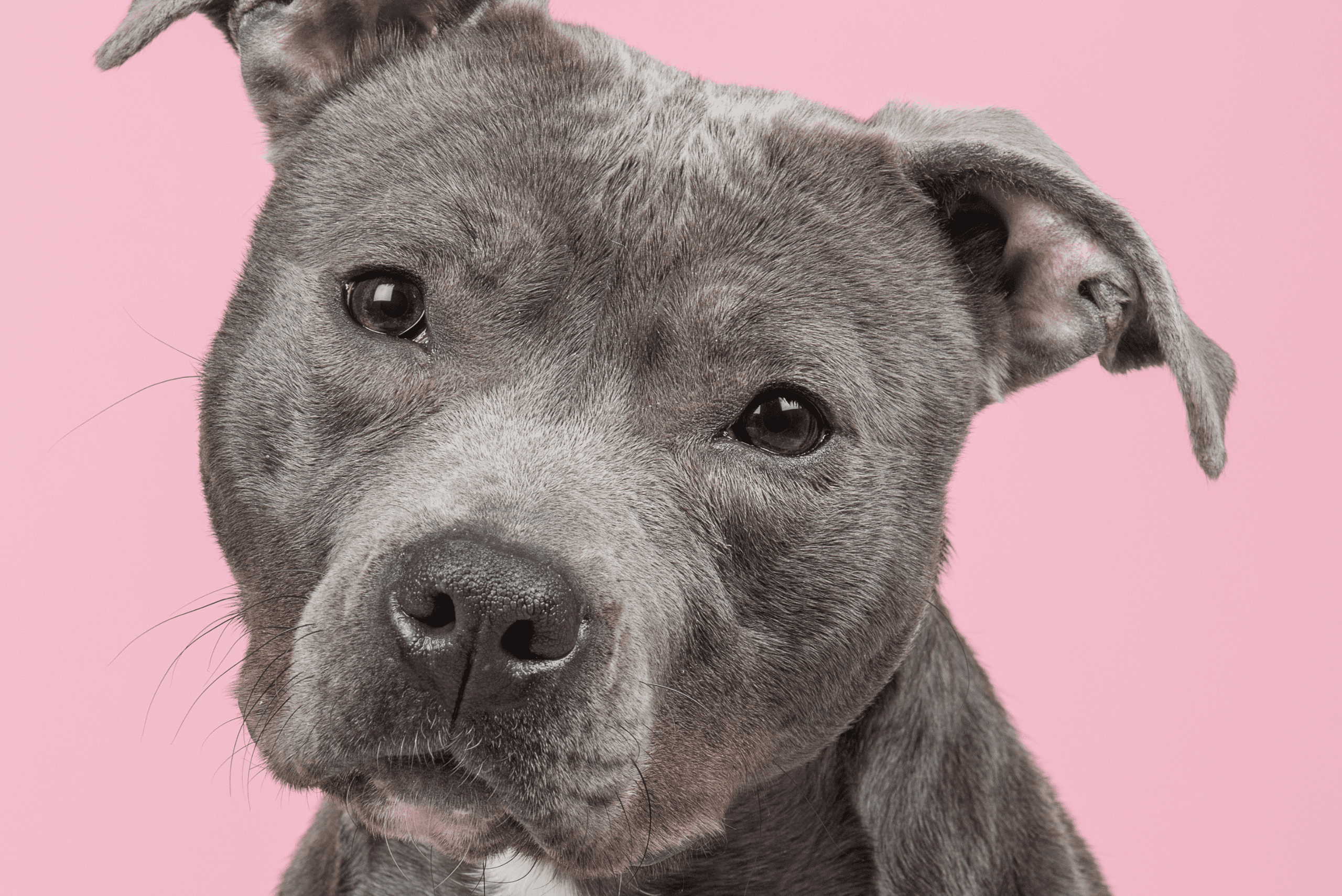People often hear the term “pit bull” or see a pit bull-type dog and immediately have an opinion of the dog’s character. When used, the phrase “pit bull” can produce mixed reactions. Pit bulls are not a breed recognized by the American Kennel Club (AKC). It is a catch-all term that often lumps together multiple breeds, including Staffordshire Bull Terrier, American Staffordshire Terrier, American Pit Bull Terrier, and many medium-sized, short-coated, mixed breed dogs with broad heads and a stocky or muscular build.
Why Should You Care About Pit Bull Breed-Labeling?
There are laws and ordinances known as breed-specific legislation (BSL) that can block you from housing access and prevent you from having specific types of dogs in a city. According to the American Veterinary Medical Association (AVMA),
“Breed-specific legislation (BSL) targets specific breeds of dogs that are wrongly thought to all be dangerous – most frequently ‘pit bull types’ – and places stricter regulations on these dogs or even makes ownership of them illegal.”
The term “pit bull” encompasses a variety of physical characteristics that can result in a number of dogs being grouped into a single breed category. This is problematic when faced with negative stereotypes associated with a broad grouping of many different breeds. BSL is a restrictive measure used to ban specific dogs that are assumed dangerous based on appearance. It prevents the evaluation of each dog as an individual.
These breed-specific restrictions can result in an outright ban in an area, euthanasia, muzzling, registering the dog as a dangerous breed, requiring specific types of fencing, and the list goes on. Deirdre Franklin, founder of Pinups for Pitbulls, Inc. says:
“BSL isn’t just an issue for owners of Pit Bull–type dogs and other breeds who are affected. It’s an issue for everyone as it affects communities at large — families, a city’s budget, local shelters and rescues, the perpetuation of false information, and, of course, dogs.”
Pit bull-type dogs are unfairly judged or lumped into a group because of certain physical traits or their “breed,” but should instead be evaluated by their behavior. Scientific studies have proven that neither experts nor the general public are able to correctly identify whether there is a pit bull breed in a mixed breed dog based solely on its looks.
BSL aims to prevent dog bites and to keep communities safe. Through science-based research, however, we know BSL doesn’t work and it is expensive to regulate. Franklin says, “Funds could [instead] be reallocated into meaningful bite prevention classes and spay and neuter, for example.” The focus should instead be educating communities on dog safety, using force-free (or positive reinforcement) training for companion animals, and enforcing leash laws.
Negative stereotypes, myths, and sensationalized media stories have created a stigma around pit bulls that make it difficult for their parents to find housing, get home or rental insurance, or even move to another city. Shelters and rescues can also have trouble getting pit bulls adopted. Our focus needs to turn to facts, not myths. In Franklin’s master's thesis she states,
“To date, there has not been a single peer-reviewed journal or study that has proven that one breed or mixed breed of dog is inherently more dangerous, or that Breed Specific laws reduce dog bites.”
Pit bulls were once known as American hero dogs (i.e., Sgt. Stubby), media stars (like Petey on Little Rascals and Chance in Homeward Bound), and beloved family members. Canine behavior science and advocates are changing the view of pit bull-type dogs and restoring the image of bravery, loyalty, and love.
Ben Croft, Operations Director of Universal K9, who rescued an abused pit bull-type dog, Kiah, from the shelter, successfully trained her to become a police dog, and placed her with a department to become the first official pit bull police dog in the state of New York, said
“‘They’re just good, good dogs. The Achilles heel is the stigma,’ Croft said, referencing the misconception that pit bulls are by nature an aggressive and violent breed.”
Remember that every dog is an individual and it’s up to us to work together to end BSL and canine discrimination through education. All of us want community safety, after all.
Other Sources:
- Franklin, Deirdre S., “Public Policy: Community Safety Through Breed Bans?” (2013). Animals and Public Policy.
- Franklin, Deirdre and Lombardi, Linda; “The Pit Bull Life; A Dog Lover’s Companion” (2017)
- The Misunderstood Pit Bull; The Pet Insider with Warren Eckstein; episode 13
- Tomkinson, Levity; “Op-Ed: BSL Isn’t Just Bad for Pit Bulls & Pit Bull Owners – It’s Bad for everyone” (2016)
Support Dog-Harmony Lifestyle Content Today
We've got the canine content you're looking for, including this article and more! By supporting Dog-Harmony Lifestyle, you can help us continue offering free online content curated by industry experts. We connect new and seasoned owners with valuable resources and education. Our contributors include veterinarians, certified professional dog trainers, and certified behavior consultants. We also feature contributors from a wide variety of other professional backgrounds. Find what you're looking for with premium content that's updated weekly:
Dog-Harmony Lifestyle content is volunteer-led meaning profits go directly to support Dog-Harmony's mission! Want to do more to support Dog-Harmony? Learn about volunteer opportunities and more ways to donate. If you are interested in writing an article for Dog-Harmony or contributing content, email our Lifestyle editors.






